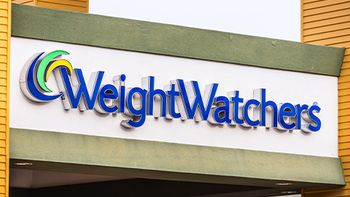The second day of LogiPharma USA was kicked off with an opening keynote collaborative effort on “Drug Shortage Mitigation Strategies—How is the Supply Chain Addressing This Issue?”1
Here in the United States, healthcare stakeholders would agree that drug shortages are an issue that is impacting various cogs in the supply chain, whether that be patient care, hospital ops, and pharmacy systems. With that in mind, leaders in the space are working tirelessly to find efficient ways to limit these gaps in supply while also boosting resilience.
This is all in the midst of combatting obstacles such as pandemics, weather, and regulatory obstacles.
Moderated by April Giles, executive director of the End Drug Shortages Alliance, she was joined by Meera Bhavsar, vice president of US hospital sterile injectables; Eric Tichy, vice chair of the pharmacy formulary, Mayo Clinic; Lauren DeReus, senior vice president of health system partnerships and sales, Cencora; and James Jean, US hospital supply chain lead, Pfizer, to discuss various topics, including:
- Supply chain vulnerabilities driving ongoing drug shortages, along with the strategies stakeholders are using to address them
- Cross-industry efforts, including the End Drug Shortages Alliance and hospital-manufacturer partnerships that are designed to enhance transparency, sourcing, and reliability
- How manufacturers, health systems, and distributors are applying data, diversification, and proactive planning to strengthen and sustain the pharma supply chain
Current state of US drug shortages
Giles kicked off the presentation with some thought-provoking statistics and graphics on the topic—provided by the University of Utah Drug Information Service—including:
- 253, which represents the number of active drug shortages, the lowest number since early 2022. It’s also a decrease from the high of 323 in Q1 2024.
- 42% of all active shortages started in 2022 or earlier.
- This has caused a chain-reaction effect, as the manpower needed to manage these shortages (such as efforts to improve pharmacy automation and EHRs) has exacerbated the challenges surrounding shortages in pharmacy staff.
As of June 30, 2025, the top five drug classes experiencing drug shortages currently—whether it be injectable or non-injectable—includes antimicrobials, chemo, central nervous system, fluids/electrolytes, and hormone agents.
Last year alone, according to manufacturers, 55% of them indicated that the main reason for shortages is unknown. Interestingly, only 9% indicated that it was due to supply/demand.
The real-world impact on patient care
One point that took a deep dive, featured how these shortages have manifested within Mayo Clinic and other health systems, including how they have impacted its ability. ability to treat patients.
“I think the data itself is very sobering, and then when you start to weave in some of the specific situations that patients run into, it's very disturbing that we have this problem in the United States,” Tichy explained. “Chemotherapy, specifically. A couple of years ago, we had a very severe shortage of some core chemotherapy medications, and it directly interfered with our ability to carry out standard protocols for how to treat certain types of cancer. That shortage, it actually got so bad that I was called to the White House to testify and do some sort of strategic planning on how the White House could prevent these kinds of shortages.”
He also referenced the ramifications of Hurricane Helene, including when it knocked out a Baxter plant.2 With Baxter manufacturing 60% of fluids out of that one plant, Mayo Clinic was well resourced with safety stock, but a lot of other healthcare providers operating on more of next day, same day, same week delivery, so the impact was felt in that regard.
Economics and generic injectable challenges
Industry experts emphasized that persistent challenges with generic injectables are not isolated to one group, but rather, a shared issue across the healthcare ecosystem.
“It’s not an ‘us’ problem or ‘you’ problem. It's honestly an everyone problem because of the fact that these generic deductibles are used in every single hospital, every surgery center, every oncology clinic. It's a real problem for all of us, that this is just a continuous problem that we want to deal with,” Bhavsar explained. “From our perspective, it really comes down to economics in this system, this environment that we have, and it's a thing that we deal with in terms of both price and how we contract.
“The challenge in this space is that over time, there's been a lot of consolidation in terms of buyers. There's also been competitors coming in and out of the market. Hospital budgets have gotten tighter and tighter. And they're managing the very little and figuring out how to spend a valuable resource, and it's really driven down the price of these generic injectables to a point where there are times it is unsustainable, and companies do have to make decisions on whether they stay in the space or not.”
Fast facts: US drug shortages
- 253 active shortages (lowest since early 2022, down from 323 in Q1 2024)
- 42% of current shortages began in 2022 or earlier
- Top 5 drug classes affected: antimicrobials, chemotherapy, CNS agents, fluids/electrolytes, hormone agents
- 55% of manufacturers cite the main cause of shortages as unknown
Manufacturing complexities and quality considerations
Manufacturing dynamics have also added complexity to drug supply challenges, with factors like market competition, sourcing strategies, and quality approaches shaping outcomes.
“When you look at data specifically manufacturing, there's so many different aspects to shorten manufacturing, and it isn't just an actual manufacturing execution. Case in point, depending on what the market dynamics are, whether you’re sole source, meaning, we're the only one who makes it, or if there are 11 competitors on the market,” Jean pointed out. “Those present various dynamics from manufacturing perspective. Are we making it at one manufacturing site, or multiple? Do we have redundancies? It comes down to, what's the sourcing strategy? Do we have the margins to just source it elsewhere? … The other piece is your approach to quality. You have to approach quality based on what the market needs are, whether it's proactively maintained, whether it's a fleet of vehicles, or temperature-controled solutions. And when you look at the margins on some of these products that are printed, sometimes a bottle of water costs more than what most people pay for something that you're injecting in your body— that should give everyone pause.”
The panel also dove into the value in maintaining calm and avoiding overreacting during shortage situations, while focusing on building long-term relationships with resilient suppliers. They also explored ways to improve transparency and communication between manufacturers, distributors, and healthcare providers to better manage drug shortages.
References
1. Giles A, Bhavsar M, Tichy E, DeReus L, Jean J. Drug Shortage Mitigation Strategies—How is the Supply Chain Addressing This Issue?. September 30, 2025. LogiPharma USA 2025. Boston.
2. Saraceno N. Baxter North Cove Plant Currently Closed Due to Hurricane Helene. Pharmaceutical Commerce. October 2, 2024. Accessed September 30, 2025. https://www.pharmaceuticalcommerce.com/view/baxter-north-cove-plant-closed-hurricane-helene






